Welcome to Part 2 of Our How to Series on Sheet Metal Cutting.
We will be discussing sheet metal cutting automation. Hopefully giving some advice and tips for those that need it, when it comes to their cutting automation needs.
If you are just setting up your fab shop, or you are an established industrial metal fabricators, I hope you find this useful! Please note this is not gospel, and is simply a guide – if you have anything you would like to add, feel free to comment at the bottom!
Flame (Oxy-Acetylene)/Gas Cutting.
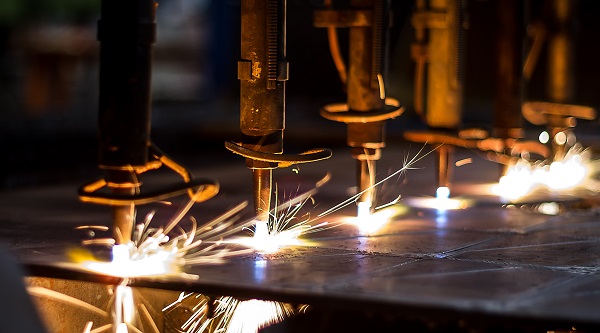
Gas profile cutting has many advantages. The process offers rapid pre-heating, optimal speed and clean cuts, even with rusty, scaled or printed materials.
The high flame temperature and concentrated heat of the oxy-acetylene cuts through steel plate from 0.5 – 250mm, and a 3mm kerf, depending on material.
With oxy-acetylene, a much steadier, smoother cut is produced compared with the use of other gases. Flame adjustability is also an advantage, with guaranteed sharp-cut edges and easily removable slag.
It is a labour intensive process, with 80-90% of costs being labour and equipment. However, flame offers high efficiency. The cut will produce a heat affected zone (HAZ), but additional machining will remove this, as well as edge burring.
Edge squareness is fair, but will demonstrate non-parallel cut edges with some frequency. The cut surface will show a thick, striated edge.
More information can be found here on our product page, including our current machines available for sale.
CNC Plasma Cutting
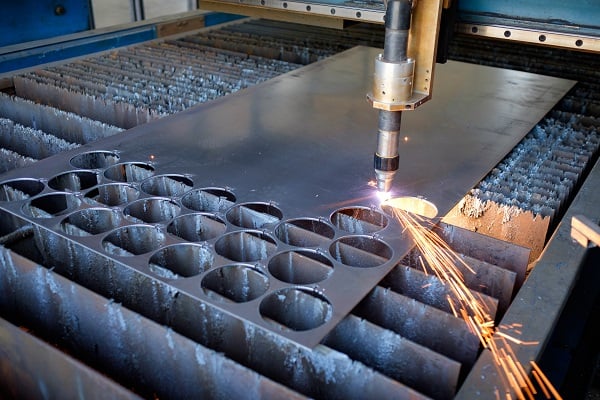
The plasma process is ionised gases that are electrically charged, the plasma arc is then constricted through the nozzle.
Focused plasma melts material with high heat density. Kinetic energy then moves the molten material out of the kerf.
All conductive materials can be cut, including carbon and stainless steels and aluminium. With thicknesses up to 50mm and 90mm edge start.
The difference between manual plasma cutting and automated plasma cutting, apart from the use of a cutting bed, is the addition of a CNC unit. This is used to control the functions and programming of the carriageway and torch head(s).
Plasma marking is also possible on some software options – the arc does not penetrate the full thickness of the sheet, therefore only ‘marking’ the surface.
One advantage over flame cutting is that plasma cutting can be used to cut stainless steel.
As laser cutting technology has developed, the demand from a plasma cutter has become even greater. Advanced technology now produces “laser-like” cut quality from the likes of Hypertherm and Thermal Dynamics, two of the major players in the CNC plasma cutting market.
Overall it offers unbeatable cost/benefit ratio, high cutting speeds and precise cut edges. It’s a great choice for any metal fabricator looking for a value for money system offering superb results.
Click here to view our current stock of used, refurbished and retrofit CNC plasma cutters.
Waterjet Cutting
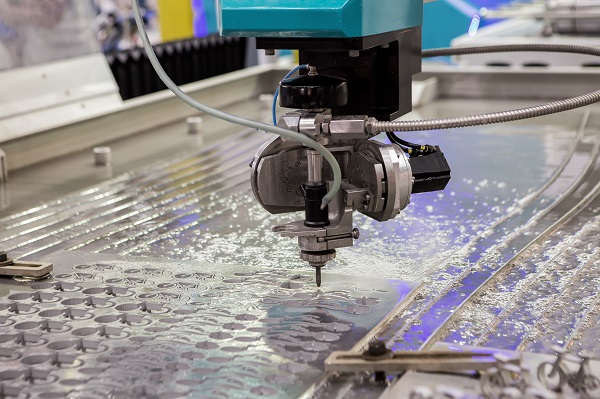
Waterjet cutting uses a jet of water at high velocity and pressure. It’s sometimes mixed with abrasive substances to cut through a wide variety of materials. In essence it is a similar process to that of water erosion in the natural world, just at a higher concentrated and accelerated level.
This process is used for cutting, shaping, reaming and carving almost any material. From mild/carbon/stainless steels to wood and laminates, aluminium, carbon fibre and plastics/acrylics.
It is also very effective at cutting reflective materials that Co2 lasers can’t touch, such as brass.
Being heat and gaseous material free, the waterjet cutting process is a cost effective operation, and brings accurate cutting on a wide range of material thickness. The kerf width can be changed by simply changing the nozzle. Non-abrasive cuts can be as small as 0.003″, which is the approximate size of a human hair! This allows for very small detail in a wide range of applications. Due to the lack of heat, there is also no thermal stress or burring on the cut.
Waterjet cutting is used and beneficial in a wide range of industries from mining to aerospace.
Laser Cutting
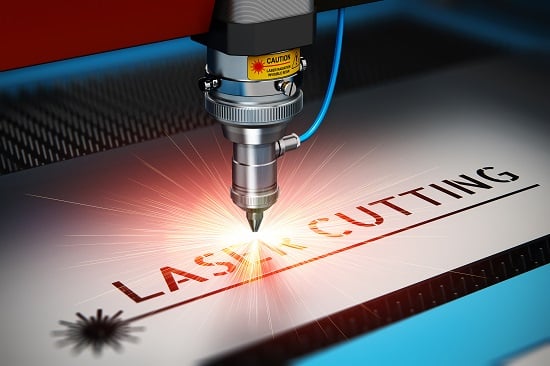
Laser cutting uses a focused laser beam to melt material in a localised area. Thus reducing heat distortion, then high pressure nitrogen is used to blow the molten material away.
Laser cutting offers a superior edge finish that requires no de-burring or finishing, meaning complex shapes can be cut without the need for expensive tooling. +/- 0.1mm tolerances are achievable in many thicknesses. With faster cuts on material up to 5mm without compromise on cut quality, and a very small kerf width.
Most common metals used in the laser cutting process are mild, stainless steel and aluminium. Fibre laser is an advanced alternative to Co2 laser, which also allows for the cutting of reflective materials such as aluminium, copper and brass. Other materials that can also be cut using the laser cutting process are acrylic, cardboard, textiles, wood and leather.
Laser cutting equipment is an expensive outlay, however if used correctly, can be an extremely effective and profitable process of cutting precision parts.
Check out this post for more details if laser cutting is of interest to you.


 600+ machines in stock
600+ machines in stock Worldwide delivery
Worldwide delivery Rated Excellent
Rated Excellent Warranty included
Warranty included Qualified engineers
Qualified engineers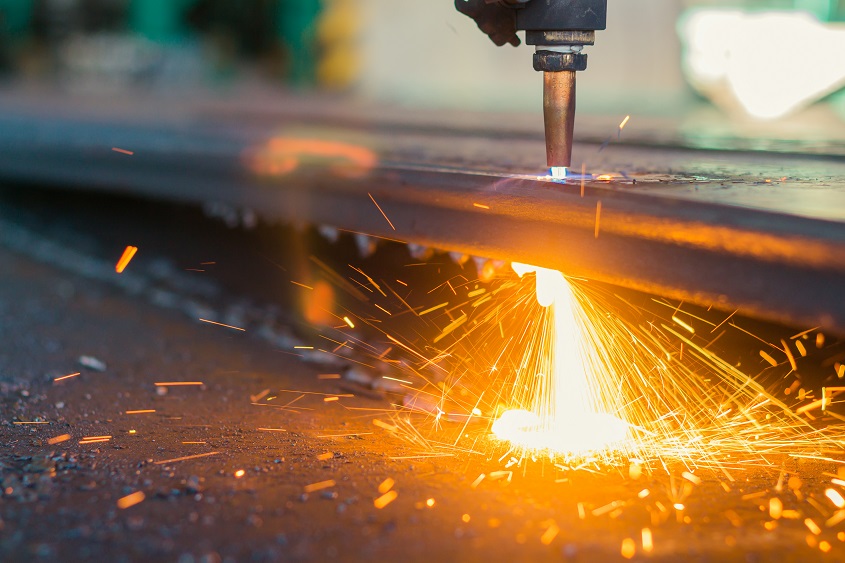

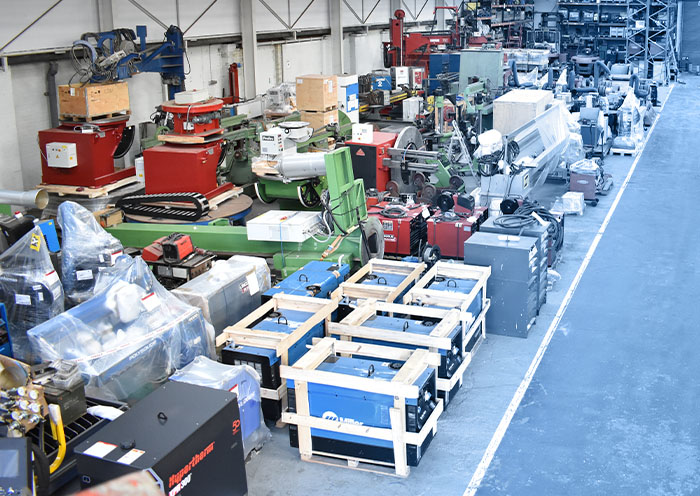

comments
Thanks for sharing the post. It’s a useful information about sheet metal cutting.
I really enjoy these articles. today, after fifty years of experience, I actually learned what was meant by left, straight and right cutting shears. I knew of the terms, but I never bothered to actually learn that the “handness” refers to a cutting direction. no wonder I have fought trying to cut because I always grabbed the pair that were on top of the drawer. I think I thought the “handness” referred to the dominant hand of the person using them! duh, amazing how ignorant someone can be about something. your blog and https://ourask.blogspot.com/ this blog help me a lot to learn about cutting metal.
thanks again, now, I will know which ones to use for each need.